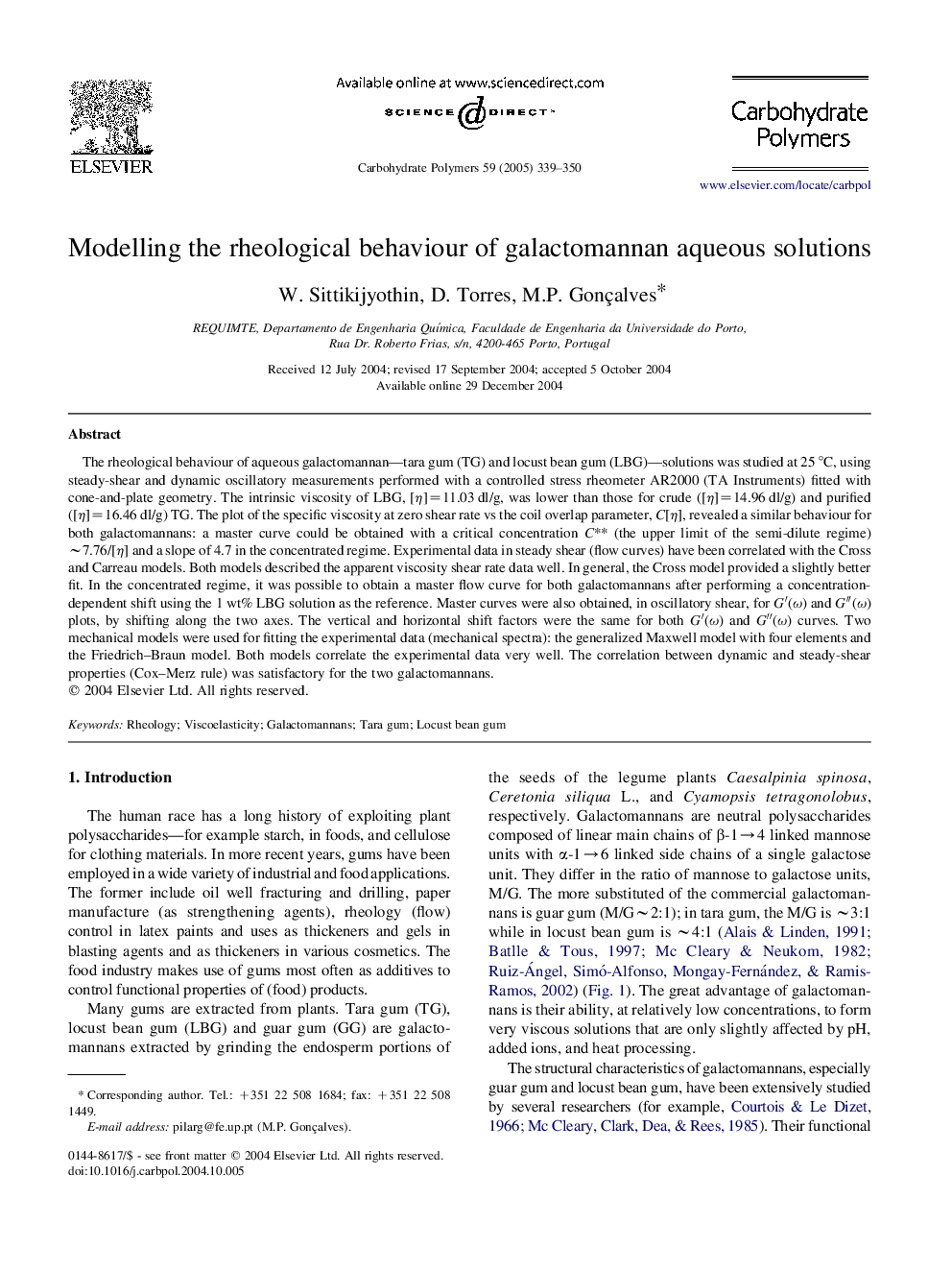| Article ID | Journal | Published Year | Pages | File Type |
|---|---|---|---|---|
| 10603208 | Carbohydrate Polymers | 2005 | 12 Pages |
Abstract
The rheological behaviour of aqueous galactomannan-tara gum (TG) and locust bean gum (LBG)-solutions was studied at 25 °C, using steady-shear and dynamic oscillatory measurements performed with a controlled stress rheometer AR2000 (TA Instruments) fitted with cone-and-plate geometry. The intrinsic viscosity of LBG, [η]=11.03 dl/g, was lower than those for crude ([η]=14.96 dl/g) and purified ([η]=16.46 dl/g) TG. The plot of the specific viscosity at zero shear rate vs the coil overlap parameter, C[η], revealed a similar behaviour for both galactomannans: a master curve could be obtained with a critical concentration C** (the upper limit of the semi-dilute regime) â¼7.76/[η] and a slope of 4.7 in the concentrated regime. Experimental data in steady shear (flow curves) have been correlated with the Cross and Carreau models. Both models described the apparent viscosity shear rate data well. In general, the Cross model provided a slightly better fit. In the concentrated regime, it was possible to obtain a master flow curve for both galactomannans after performing a concentration-dependent shift using the 1 wt% LBG solution as the reference. Master curves were also obtained, in oscillatory shear, for Gâ²(Ï) and Gâ³(Ï) plots, by shifting along the two axes. The vertical and horizontal shift factors were the same for both Gâ²(Ï) and Gâ³(Ï) curves. Two mechanical models were used for fitting the experimental data (mechanical spectra): the generalized Maxwell model with four elements and the Friedrich-Braun model. Both models correlate the experimental data very well. The correlation between dynamic and steady-shear properties (Cox-Merz rule) was satisfactory for the two galactomannans.
Related Topics
Physical Sciences and Engineering
Chemistry
Organic Chemistry
Authors
W. Sittikijyothin, D. Torres, M.P. Gonçalves,
